Download ,dB15,|`////ATIQ DAV/2112521621 .` `
Transcript
US005959688A
Ulllted States Patent [19]
[11] Patent Number:
Schein et al.
[45]
[54]
Date of Patent:
5,959,688
Sep. 28, 1999
TELEVISION SCHEDULE SYSTEM AND
METHOD OF OPERATION FOR MULTIPLE
4,706,121 11/1987 Young ................................... .. 358/142
4,751,578 6/1988 Reiter et a1.
. 358/183
PROGRAM OCCURENCES
4,908,713
5,335,277
3/1990 Levine ......... ..
8/1994 Harvey et al. ..
6/1996 Young
Marshall
et 8.1.
...............................
......................... .... 348/589
Inventors:
Steven MI Schein, Menlo
_
Park; David
.
_
5,523,796
P. Warden, Belmont, Molly K. King,
_
5 , 596 , 373
Theresa A- Alba> both of Fremont’
5,684,525
150:)?" E- Russmam Pleasantom all of
1 /1997
.
White
........ ..
11/1997 Klosterman .
..
.
358/335
380/20
348/569
.. 348/906
B1 4,706,121 12/1993 Young ................................... .. 358/142
a 1 .
_
_
OTHER PUBLICATIONS
[73] Ass1gnee: StarSlght Telecast, Inc., Fremont,
Cahf'
[21]
Goldberg, “A 35—inch Zenith TV premieres StarSight’s
onscreen guide,” Video (Apr. 1995) p. 41.
_
StarS1ght User’s Manual.
Appl. No.: 09/120,704
[22] Filed:
Jul. 22, 1998
Related US Application Data
Primary Examiner—Sherrie Hsia
Attorney, Agent, or Firm—Christie, Parker & Hale, LLP
[63]
Continuation of application No. 08/665,216, Jun. 14, 1996,
Pat. NO. 5,801,787.
[57]
[51]
[52]
[58]
Int. Cl.6 ..................................................... .. H04N 5/50
US. Cl. ......................... .. 348/569; 348/906; 348/589
Field of Search ................................... .. 348/563, 564,
An improved television guide system. According to one
embodiment of the invention, television guide information is
Provided that includes multiple Occurrences of a Single
348/569, 600, 906, 589; H04N 5/50, 5/445
[56]
ABSTRACT
shoW. The guide system of the present invention alloWs the
user to identify a shoW and, thereafter, identify When the
identi?ed shoW Will be played again. Accordingly, the user
may more easily select shoWs for vieWing or recordation.
References Cited
U.S. PATENT DOCUMENTS
4,488,179 12/1984 Kruger et al. ........................ .. 358/181
15 Claims, 4 Drawing Sheets
GONE WITH THE WIND
SOURCE
951
TIME
,dB15,|'////ATIQ DAV/2112521621 .' ’
HBOI
H802
TODAY
TODAY
||=o0 PM
“=30 PM
DSSI
WED,5/8 4=o0 AM
NBC
TH, 5/9 500 PM
INTERNET
BLOCKBUSTER
U.S. Patent
Sep.28, 1999
Sheet 1 of4
5,959,688
/|o
pkg/I8
05s
24
A2
51/
I
TV
COORDINATOR
5o
,26
CPU
,28
:-
50
16
A
000
OTHER
_:> ‘:3
VCR
000/22
’
J
CABLE
FIG I
20
7/
MEN {_
TM
5'1
§
/'5
_—/\_l
U.S. Patent
SOURCE
USA
NBC
H802
Sep.28, 1999
2:00 l
BATMAN
3100
SOAP
CASABLANCA
FIG: 2.
Sheet 2 of4
|
4=OO
NEWS
COMEDY
5,959,688
1'46
U.S. Patent
Sep.28, 1999
Sheet 3 of4
GONE WITH THE WIND
SOURCE
DAY
M
HBC5V///lTIQ DAV/AUZQii’é
HBOI
H802
Dss|
TODAY
u=o0 PM
TODAY
“=30 PM
WED,5/8 4=oo AM
NBC
TH,5/9
INTERNET
BLOCKBUSTER
5:00 PM
F/G. 3.
5,959,688
U.S. Patent
Sep. 28, 1999
5,959,688
Sheet 4 0f 4
@
RECEIVE "WHEN-ELSE"
INPUT
1
r402
SEARCH FOR OTHER IN
STANCES OF THE PARTICU
LAR SHOW
1
‘[404
DISPLAY OTHER
INSTANCES OF THE
PARTICULAR SHOW
1
RECEIVE TUNE/
RECORD COMMANDS
FIG: 4.
406
5,959,688
1
2
TELEVISION SCHEDULE SYSTEM AND
METHOD OF OPERATION FOR MULTIPLE
PROGRAM OCCURENCES
satellite systems today, a particular movie Will be played on
multiple channels With offset start times. The guide system
of the present invention alloWs the user to identify a par
ticular shoW and, thereafter, identify When the identi?ed
particular shoW Will be played again. The user may therefore
CROSS-REFERENCE TO RELATED
APPLICATIONS
This application is a continuation of application Ser. No.
08/665,216, ?led on Jun. 14, 1996, allowed for issuance on
Feb. 26, 1998, US. Pat. No. 5,801,787.
more easily select shoWs for vieWing or recordation.
Accordingly, in one embodiment the invention provides a
method of generating television guide information for a
vieWer comprising the steps of inputting schedule guide
10
The present invention relates to the ?eld of television
schedule guides and their method of operation. More
speci?cally, in one embodiment the invention provides a
15
method and apparatus for identifying When a particular shoW
is being broadcast in a television guide system.
As video entertainment becomes increasingly
sophisticated, consumers are provided With Wider options in
video entertainment. In addition to conventional broadcast
draWings.
BRIEF DESCRIPTION OF THE DRAWINGS
20
access to, for example, cable television programming, digi
tal satellite service programming, cable stereo broadcast,
and conventional satellite programming. Moreover, Within
FIG. 1 is an overall diagram illustrating a television
system in accordance With one embodiment of the invention;
FIG. 2 is a typical grid guide used according to one
embodiment of the invention;
25
FIG. 3 is a display provided to the user When the “When
else” feature is utiliZed; and
FIG. 4 is an overall ?oWchart illustrating operation of the
invention.
consumer, the number and variety of programs is increasing
dramatically.
While bene?tting consumers through greater selection,
the array of programming available to consumers also
presented a certain dilemma. Speci?cally, as the number of
programs available to the consumer became large, the pro
cess of selecting Which program to vieW became increas
ingly onerous. For example, a consumer may have access to
Well over 100 cable television channels. If a particular
consumer has access to not only cable programming, but
and identifying for the user other times When the particular
shoW Will be shoWn.
A further understanding of the nature and advantages of
the inventions herein may be realiZed by reference to the
remaining portions of the speci?cation and the attached
television programs, a television vieWer may noW have
each of the various transmission media available to the
information into a guide system; receiving user input to
identify a particular shoW in the schedule guide information;
BACKGROUND OF THE INVENTION
30
DESCRIPTION OF THE PREFERRED
EMBODIMENTS
The present invention utiliZes television schedule guide
information Which may be obtained from one or several
sources. These sources may include an incoming cable line
35 (e.g., on a coax cable), satellite broadcasts, a dedicated
also other programming (such as digital satellite service) the
telephone line (e.g., a tWisted pair), and any other medium
process of choosing a program Would have been daunting.
capable of transmitting a signal, such as a computer or
modem line. Although the invention Will ?nd Wide use in
Accordingly, neW and improved methods of providing
program guide information have been developed for display
on the television screen of the consumer’s television. Of
systems With only a single source of television signals, such
40
particular note, the StarSightTM onscreen guide system has
proven to be pioneering in the ?eld of onscreen guide
systems. The StarSight system provides not only television
listings, but also capabilities such as theme searching, VCR
programming, detailed program information, and other
45 ventional antenna . . . and a satellite dish such as a DBS
source, or (5) one of the above sources and an internet or
functionality.
other computer source. The multisource schedule informa
tion is sorted and displayed to the user in an organiZed
fashion as described in greater detail in US. application Ser.
Recently, additional functionality is suggested in such
systems. See US. application Ser. No. 08/665,216, US. Pat.
No. 5,801,787, incorporated herein by reference for all
purposes. In one such system, guide information from, for
as a satellite system, the invention Will be illustrated herein
primarily in relation to a system Where broadcasts are
received from at least tWo separate sources such as (1) cable
and a satellite dish, or (2) tWo different satellites, or (3) local
cable and digital broadcast sources (DBSs), or (4) a con
50
No. 08/423,410, incorporated herein by reference.
When a user selects a shoW Within a displayed guide, the
system reads a source identi?er associated With that shoW or
example, disparate sources such as satellite sources and
cable sources is combined to form a uni?ed guide.
channel. In the preferred embodiment, the system then
A system according to this invention may, for example,
carries out an automatic sWitching/tuning process that
eliminate redundant information from such sources and 55 sWitches the input to the television (either RF or video) to a
provide other functionality.
source device. Exemplary source devices include a DBS, a
cable box, a television tuner, an internet access, etc. The
Signi?cant strides have been made via the StarSight guide
system, and in fact such guide systems are achieving Wide
system then tunes to the required channel for the desired
spread acceptance in the television industry. As the com
plexity of such systems increases, hoWever, still further
functionality is desired.
shoW. Additionally, the source identi?er can be utiliZed to
60
SUMMARY OF THE INVENTION
An improved television guide system is provided by
virtue of the present invention. According to one embodi
ment of the invention, multiple occurrences of a single shoW
may be identi?ed for a user. For example, in many digital
65
sWitch betWeen various devices automatically When unat
tended VCR programming is desired. Furthermore, When
program information is received from multiple satellite
sources and a desired channel is selected, the present inven
tion can, in one embodiment, automatically move the cus
tomer’s satellite dish such that the customer receives the
desired program from the associated source. The present
invention then tunes to the correct channel.
5,959,688
4
3
operating the system. In the case Where the various televi
sion signal sources are provided to the coordinator, the
In creating a merged television guide, a channel map is
created Which identi?es the channels available on the mul
tiple sources, and identi?es their source. For example, in the
case of DBS/local channel implementations, a channel map
is created With both local cable and DBS channels merged.
The local channels and the DBS channels are tagged With a
coordinator may also contain elements such as an internal
source identi?er. This merged guide information is used by
the system to identify When a particular shoW is to be played,
even When it is not from the same source as another instance
of the same shoW.
10
When the user/consumer selects a non-DBS channel from
tuner, a sWitching device for sWitching betWeen sources, and
other components. In the embodiment shoWn in FIG. 1, the
coordinator is connected to and controls infrared (IR)
emitter(s) 30. IR receiver 31 is connected to coordinator 14
and receives input from the remote or keyboard 22 to
provide the necessary user input to the system. IR emitter(s)
30 can be replaced by, for example, a hard Wired interface,
a bus interface, or an RF transmitter. The IR emitter(s) 30
and/or direct connections (e.g., 31) control one or more of
the guide, the integrated receiver decoder unit (IRD box) for
IRD box 18, . . . television 12, VCR 13, cable box 16, and
the satellite sWitches the IRD to couple the local cable, for
example, to the receiver. The system then tunes the televi
sion tuner or other tuning device to the required channel. If
a DBS channel is later selected, the system sWitches the IRD
to couple the satellite receiver/decoder to the receiver. The
other inputs 20. IR emitter(s) 30 acts as a remote control
device by emulating remote control signals of television 12,
15
VCR 13, cable box 16, and/or other devices. Coordinator 14
can, in some embodiments, be placed in, for example, the
cable box 16, VCR 13, television 12, a satellite receiver or
even the keyboard/computer.
Remote control 22 is a hand-held remote controller for
system then tunes the DBS tuner to the selected DBS
channel. In the case of, for example, cable and antenna
inputs, the system sWitches to the correct video input and
controlling coordinator 14. In the preferred embodiment,
then tunes the television tuner to the required channel for
receiving the selected source. Thus, automatic access to
remote control 22 is provided With an IR transmitter Which
controls the coordinator via IR receiver 31. Other remote
controls, not shoWn in FIG. 1, can be used for manually
multi-source television schedule guide information is pro
vided.
While the present invention is illustrated herein primarily
in relation to a system in Which the merged guide is formed
at the user’s location, it Will be understood that this is only
for the purposes of illustration, and the merged guide may be
25
coordinator 14 performs all the necessary control functions
of the system. For example, as the user adjusts the volume
control on remote 22, coordinator 14 emits signals through
IR emitter 30 to adjust the volume in television 12.
IRD box 18 receives television programs along With other
information via, in one embodiment, satellite dish 32. IRD
box 18 and the other sources of television signals each
provide program schedule information to the system. This
formed at a remote location such as a cable head-end.
FIG. 1 illustrates in simpli?ed form an example of a
multi-source television schedule guide system 10 With mul
tiple sources connected directly or indirectly to a television
12 and/or VCR 13. In the embodiment in FIG. 1, multi
source television program and television schedule guide
system 10 operates under the control of coordinator 14.
Television 12 and VCR 13 are provided With inputs from
cable box 16 and DBS source 18 either directly as illustrated
in FIG. 1, or via coordinator 14. Other inputs 20 may also
be supplied to the television and/or VCR directly or via the
coordinator 14. A remote control 22 is used by a vieWer to
tune the television and conduct other operations. In alterna
tive embodiments, a keyboard, such as a computer
program schedule information (or guide) may also include a
35
ing Which channels are available on that source. Information
associated With the DBS guide and others is saved in the
14. Similarly, program guide information can be received
through cable box 16, other inputs 20, antenna 24, and/or
through any other transmission medium (e.g., dedicated
tWisted pair telephone line). Each of these sources may also
be provided With television schedule data Within the signal
transmitted by the service provider.
45
In this embodiment, cable is provided via cable box 16,
Coordinator 14 ?nds and sorts the program guide infor
mation available in system 10. Various formats can be used
for the television schedule information. For example, data
packets comprising a simple header section and an infor
and DBS is provided via IRD box 18. Antenna 24 may be
used as additional sources of television broadcasts along
With cable box 16, IRD box 18, and other inputs 20. In one
typical embodiment, antenna 24 and cable box 16 Would be
considered “local” sources meaning that they likely contain
local television broadcasts such as local neWs broadcasts. By
contrast, DBS sources Would not be considered local
because they Would likely not contain such local content.
Other inputs 20 can include multiple satellite sources.
channel map that contains the channel information indicat
IRD box receiver’s RAM or doWnloaded to the coordinator
keyboard, is used for input. The keyboard may be hard-Wire
connected or Wireless.
controlling television 12, VCR 13, cable box 16, IRD box
18, and other inputs 20 although, in a preferred embodiment,
55
When multiple satellite sources are present, coordinator 14
sWitches betWeen the available satellite sources by automati
mation section can be received and sorted With other, more
complex data packet formats, or a header With source
information can be added. In the preferred embodiment,
coordinator 14 takes the television schedule information
from the available source(s) or a data input line and sorts/
mixes it. For example, coordinator 14 may receive program
schedule information via the vertical blanking interval in a
television channel or via a transponder for the DBS, or the
internet, and then arrange the information in an organiZed
fashion, or perform other operations. For example, the
system may eliminate duplicate channels.
cally moving the user’s satellite dish or sWitching betWeen
satellite dishes. In order to automatically move the satellite
In an alternative arrangement, the sorting/mixing of pro
gram schedule information is done in a separate location and
dish, a memory Within IRD box 18 (or elseWhere) tracks the
position of the DBS satellite dish in relation to satellite
sources Which are available via the DBS satellite dish. The
then provided to system 10, for example, on a simple
satellite channel. Thus, program schedule information,
IRD box 18 then automatically positions the DBS satellite
Which has already been mixed, sorted, organiZed, etc., is
dish such that the desired satellite source is received by the
IRD box 18.
Coordinator 14 includes processor (CPU) 26 and memory
(typically RAM) 28 that serve as the primary devices for
received in a format Which is ready for display. This ready
65
for-immediate-display format can also be provided in a
separate data stream via a different medium or on a televi
sion channel.
5,959,688
5
6
FIG. 2 is a simpli?ed example of an on-screen display of
a schedule grid guide that has been assembled from the
shoW. As used herein, the term “particular shoW” refers to a
speci?c movie or other unique shoW. In the case of a series
television guide information. This display may be presented
of shoWs (e.g., the COSBY SHOW) the term “particular
on a television screen, a personal computer that conducts the
overall process, or a television sensor display generated by
shoW” Will refer to a speci?c segment or episode of that
shoW. In the example in FIG. 2 the system searches for other
a personal computer. In the preferred embodiment, after
occurrences of GONE WITH THE WIND and indicates to
coordinator 14 has collected and sorted all the available
the user if, When, and Where GONE WITH THE WIND Will
be played again. The particular shoW may or may not be
program guide information, coordinator 14 generates the
grid guide set forth in FIG. 2 for display on television 12 via,
for example, a direct connection (not shoWn) to TV 12 or via
an overlay on one of the sources such as cable source 16. In
shoWn again on the same source of video. Of course, a
10
the preferred embodiment, the user displays grid guide 40 by
pressing a guide button on remote control 22. Coordinator
14 responds to the initial pressing of the guide button by
automatically tuning to the channel or device Which carries
grid guide 40, or overlaying a grid guide in a current
broadcast. When the user is done With grid guide 40, the user
“shoW” may also refer to, for example, an FM radio broad
cast as Well as a television shoW.
15
FIG. 3 illustrates one possible outcome after entering the
“When-else” button. As shoWn, the movie GONE WITH
THE WIND is being played at multiple times in the future.
Speci?cally, it is currently being shoWn on HBO1 as the user
is probably already aWare if the screen has been entered
from a grid guide generated for the current time. In addition,
presses the guide button again (or an exit button) and
the same channel is shoWing this movie at 11:00 pm. on the
coordinator 14 (1) automatically returns to the channel or
source last vieWed by the user or (2) removes the overlay.
same day. A different channel, HBO2, is shoWing this movie
The grid guide, designated generally With the reference
20
numeral 40, provides a line up of all channels or a selection
of channels 42 along With a description of the shoWs 44
available on those channels at certain times 46. For example,
the USA netWork is shoWing BATMAN beginning at 2:00
at 11:30 pm. on the same day. In this particular illustration,
HBO1 and HBO2 are provided to the user over the same
source of television signals (in this case a cable service
provider) . Accordingly, it is seen that the invention is useful
even When only a single source of service is utiliZed. The
folloWed by NEWS. The information may be sorted and/or
usefulness of the invention is further expanded When mul
tiple sources of television signals are provided. In this
example, GONE WITH THE WIND is also being shoWn on
?ltered by, for example, theme(s) according to Young et al.,
the next Wednesday at 4:00 pm. on a DSS channel, as Well
pm. ASOAP is shoWn on NBC from 2:00 pm. to 4:00 p.m.,
25
US. Pat. No. 4,706,121, incorporated herein by reference
for all purposes.
When multiple sources are used for receiving television
channels, an overlap of channels sometimes occurs. For
as on the next Thursday on a conventional antenna netWork
30
at different times the user may make use of this information,
even When the shoW is broadcast over different sources of
television signals.
example, both cable and DBS may carry the netWork NBC,
but cable may have NBC on channel 6 and DBS may have
NBC on channel 7. By having the ability to delete and
activate the channels displayed in grid guide 40, the user can
determine Whether to display one of the NBC channels, both
signal, NBC. Accordingly, When a particular shoW is played
35
Still other sources of the particular shoW (or information
about the shoW) may be indicated. For example, in FIG. 4,
the guide indicates an “Internet” source. Toggling to this
source may provide the user With a direct internet connec
of the NBC channels, or neither of the NBC channels. In an
tion that Will, for example, provide information about the
alternative embodiment, coordinator 14 may automatically
shoW or doWnload the full shoW itself. Alternatively, adver
tising about the availability of the shoW at a video store
note duplicate netWork names and delete one of the dupli
40
cates.
The user may utiliZe the remote control device to move a
(Blockbuster) may be provided.
After identifying When a shoW is to be played the user
cursor or other indicator from position to position in the grid
guide. The cursor ma-y be indicated by, for example, col
may conduct any one of several operations. In a common
case the user Will toggle the cursor doWn to a particular
oring the display of the indicated shoW differently from the 45 instance of the shoW, and strike a “record” button on the
rest of the shoWs. In the embodiment shoWn in FIG. 2, the
cursor is directed to GONE WITH THE WIND and is
indicated by cross hatching. In this particular instance the
double marks to the left of the display indicate that GONE
WITH THE WIND has been playing for some period of time
50
already. Accordingly, the user may Wish to ?nd out if the
movie GONE WITH THE WIND is shoWing at other times
such that the user may either automatically record the future
to that shoW, or prompt the user to determine if the user
Wishes to have the television tuned to that particular channel.
In other cases, the user may use the information for the
presentation of GONE WITH THE WIND, automatically
tune to the future presentation of GONE WITH THE WIND,
55
or simply be aWare that GONE WITH THE WIND Will be
shoWing at a future time.
Accordingly, the user provides input to the system to
indicate that the user Would like to knoW “When-else” the
shoW Will be presented. This input may be, for example,
60
provided by pressing a dedicated button on the remote
control, or by marking a shoW, toggling the cursor to a
“When-else” screen display button 48, and striking an
“enter” button on the remote control. Of course a full
keyboard Will alloW more versatile operation.
In either event the controller 14 searches the stored
schedule information for other occurrences of that particular
remote control. The system Will then tune the VCR to the
proper program at the designated time and record the shoW.
In other embodiments, the user Will mark the shoW to be
placed in a reminder list. When the time for the shoW in the
reminder list arises the system Will either tune automatically
65
purpose of recalling that he/she Wishes to return to the
television at that particular time.
FIG. 4 is an overall ?oWchart illustrating operation of the
invention according to one particular embodiment. In most
cases the operation shoWn in FIG. 4 Will be performed under
the direction of softWare stored on a RAM, ROM, or other
computer-readable memory such as memory 28. The data
may be stored locally, in an external database, or in a
combination of both. In step 401 the system receives input
indicating that the user Wishes to identify other instances of
a particular shoW. At step 402 the system searches for other
instances of the particular shoW beginning at the present
time. It should be recogniZed that the user may or may not
be in a current time display in a guide When such input is
5,959,688
8
7
provided. For example, the user may be scanning a listing of
(C) searching the schedule guide information for all
action movies that have been generated based on a theme
search, and have the cursor on an instance of a particular
movie one Week in the future. When the user activates the
instances of the particular shoW starting from a present
(D) storing the vieWer selection of the particular shoW if
“When-else” function the system Will, in most embodiments,
search for all instances of that particular shoW beginning at
(E) alerting the vieWer When other instances of the
time;
no instances of the particular shoW are found;
the actual present time, not the time one Week in the future.
In this manner the user may, for eXample, identify When a
particular shoW are added to the schedule guide infor
particular movie is shoWing in the neXt feW hours, even
though the user may have his/her interest peaked in a
(F) displaying to the vieWer the other instances of the
particular shoW based on a listing at a distant date.
In some embodiments, sources are searched in the stored
3. A method of generating a television guide information
mation; and
particular shoW.
for a vieWer for use in a television guide system having a
television and at lea-st one television signal source, the
guide information to identify other instances of a particular
shoW. The search may be performed locally or externally,
method comprising the steps of:
(A) receiving schedule guide information from the tele
and may be based on shoW identity ?elds, or on term-based
searching, or a combination of the tWo. After the other
vision signal source for input into a television guide;
(B) receiving vieWer selection of a particular shoW from
the television guide;
(C) identifying for the vieWer other times When the
instances of that particular shoW have been identi?ed, a
display is generated at step 404 that includes a listing of the
other instances of the particular shoW. If none are identi?ed,
the display can either contain no such listings, or indicate
speci?cally to the user that no such listings have been
identi?ed.
Thereafter, at step 406 the user may perform any one of
particular shoW;
(D) displaying to the vieWer the other times and the other
sources of the particular shoW;
(E) receiving vieWer selection of a particular source from
a Wide variety of functions. Commonly the user may toggle
doWn to an instance of the shoW, and strike a record button,
or otherWise select the shoW for recordation. In other cases
particular shoW Will be shoWn and other sources of the
20
the display of the other times and the other sources of
25
the particular shoW; and
the user may simply return to the previous guide listing. In
(F) displaying to the vieWer information received from the
still other cases the user may toggle doWn to an instance of
selected source on the particular shoW.
the shoW, and mark it for a future reminder to be generated
for the user When that instance of the shoW arises. In still
further embodiments, the system may store the request and,
4. The method of claim 1 Wherein the television guide
system receives the schedule guide information from at least
even if no other instances of the particular shoW are pres
tWo television signal sources.
5. The method of claim 4 further comprising the steps of:
selecting a particular source from the display of the other
times and the other sources of the particular shoW; and
automatically sWitching an input of the television guide
ently in the guide, provide alerts to the user When instances
of the shoW are added to the guide.
The above description is illustrative and not restrictive.
Many variations of the invention Will become apparent to
those of skill in the art upon revieW of this disclosure.
system to a television signal of the selected source, the
Merely by Way of eXample the invention has been illustrated
primarily With regard to multiple source guide systems, but
television signal carrying the particular shoW selected
from the television guide.
the invention is not so limited. The scope of the invention
6. The method of claim 4 further comprising the steps of:
miXing and sorting the schedule guide information in a
desired order; and
generating a display With the schedule guide information
presented in the desired order in a television guide
should, therefore, be determined not With reference to the
above description, but instead should be determined With
reference to the appended claims along With their full scope
of equivalents.
We claim:
1. A method of generating a television guide information
for a vieWer for use in a television guide system having a
television and at least one television signal source, the
45
tWo television signal sources.
8. The method of claim 7 Wherein the other instances
comprise information as to other times and other sources of
method comprising the steps of:
(A) receiving schedule guide information from the tele
vision signal source for input into a television guide;
(B) receiving vieWer selection of a particular shoW from
the television guide;
(C) identifying for the vieWer other times When the
particular shoW Will be shoWn and other sources of the
particular shoW; and
the particular shoW, the method further comprising the steps
of:
selecting a particular source from the display of the other
times and the other sources of the particular shoW; and
55
system to a television signal of the selected source, the
sources of the particular shoW.
2. A method of generating a television guide information
9. The method of claim 7 further comprising the steps of:
miXing and sorting the schedule guide information in a
desired order; and
generating a display With the schedule guide information
presented in the desired order in a television guide
for a vieWer for use in a television guide system having a
television and at least one television signal source, the
method comprising the steps of:
(A) receiving . schedule guide information from the
television signal source for input into a television
(B) receiving vieWer selection of a particular shoW from
the television guide;
automatically sWitching an input of the television guide
television signal carrying the particular shoW selected
from the television guide.
(D) displaying to the vieWer the other times and the other
guide;
format.
7. The method of claim 2 Wherein the television guide
system receives the schedule guide information from at least
65
format.
10. The method of claim 3 Wherein the television guide
system receives the schedule guide information from at least
tWo television signal sources.
5,959,688
9
10
11. The method of claim 10 further comprising the step of
a microprocessor, coupled to said memory, for receiving
automatically switching an input of the television guide
an indicator signal associated With the selected program
system to a television signal of the selected source, the
listing from the remote control, the microprocessor
further searching the schedule guide data for all other
television signal carrying the particular shoW selected from
the television guide.
times and all other sources of the television program
represented by the program listing, the other times and
12. The method of claim 10 further comprising the steps
of:
the other sources for being displayed to the vieWer on
miXing and sorting the schedule guide information in a
desired order; and
generating a display With the schedule guide information
presented in the desired order in a television guide
the display.
14. The system of claim 13, Wherein the microprocessor
10
format.
13. A television guide system for generating television
guide information for a vieWer, the system capable of
receiving television signals from a plurality of sources, the
15
a receiver for receiving schedule guide data representing
listings of television programs telecast from the plu
rality of sources and a source identi?er for each listing;
control signal, the control signal automatically sWitch
a memory, coupled to the receiver, for storing the sched
ing an input of the television guide system to a televi
sion signal of the selected source, the television signal
carrying a shoW corresponding to the selected program
ule guide data;
a display, coupled to the memory, for displaying some of
the program listings in a guide format;
gram listings; and
15. The system of claim 13 further comprising:
a controller, coupled to the memory, for receiving the
indicator signal from the remote control, the indicator
signal being associated With a source selected from the
display of the other times and the other sources of the
program;
an emitter, coupled to the controller, for transmitting a
system comprising:
a remote control for selecting one of the displayed pro
miXes and sorts the schedule guide data in a desired order,
and the display displays some of the program listings in the
desired order in a television guide format.
listing.
25










![El WE]](http://vs1.manualzilla.com/store/data/005973526_1-5126190d8f2880fb7d5b7ddc41b9f31a-150x150.png)
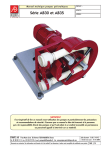

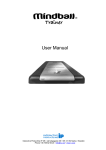
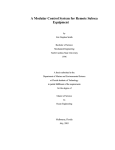
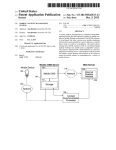
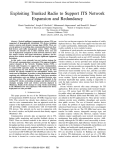
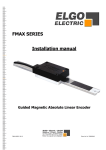
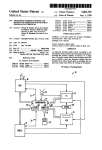


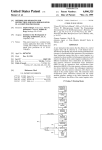
![[54] W, rm-pg`vzvlsggéggllslswnolq MONITOR OTHER](http://vs1.manualzilla.com/store/data/005697201_1-5cf72edac23b396dc325f3c508f97781-150x150.png)
